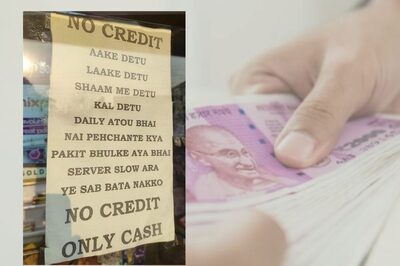
views
A personal loan and an overdraft are quite different from each other and have specific use cases. Let’s see how these two credit instruments differ. An overdraft or personal overdraft is a facility offered by the bank that allows customers to withdraw a certain amount of money even if there is not enough money in their bank account. It is simply a line of credit that banks offer to their customers based on their business activity, frequency of transactions and average monthly and annual balance.
Overdraft vs Personal Loan
Availability
In a personal loan, borrowers have to submit mandatory documents which is not the case in a personal overdraft. Taking a personal loan is a somewhat lengthy process where the borrower has to meet certain criteria and wait for approval. The disbursement of a personal loan can take anywhere from 24 hours to 7 days depending on the verification process.
In a personal overdraft, you do not have to apply every time you need money. If you have this facility in your bank account, you can easily withdraw additional funds without informing the bank. However, you will have to deposit the excess amount along with the interest within a specific period so that the bank can continue to provide you with this facility.
Eligibility
For a personal loan, the borrower will have to submit various documents such as income proof for the last six months, tax returns for the last three months and KYC details. Even if you submit all these documents, you cannot be sure that the bank/NBFC will approve your loan application.
In contrast, with a personal overdraft, you do not have to prove your eligibility every time you avail of the overdraft facility. However, the bank can cancel the overdraft facility on your account at any time if you delay repayment.
Repayment Method
Personal loans are repaid in the form of equal monthly instalments (EMI) within a specified time frame. The amount of repayment of a personal loan depends on the amount of loan disbursed and the interest rate applied by your lending institution.
Repayment of the overdraft is done simply by depositing the entire amount plus interest into the borrower’s bank account. You can also pay the entire amount (overdraft + interest) directly to the bank by check or bank transfer. The bank will automatically deduct the amount so that you can use an overdraft again if needed.
Early Repayment
Both a personal loan and an overdraft can be repaid early if the borrower manages to raise funds before the loan term expires. However, for early repayment of a personal loan, lending institutions charge a prepayment penalty of up to 4.72% (including taxes). When repaying a personal overdraft early, you will not be charged any penalties or additional fees by the bank.



















Comments
0 comment